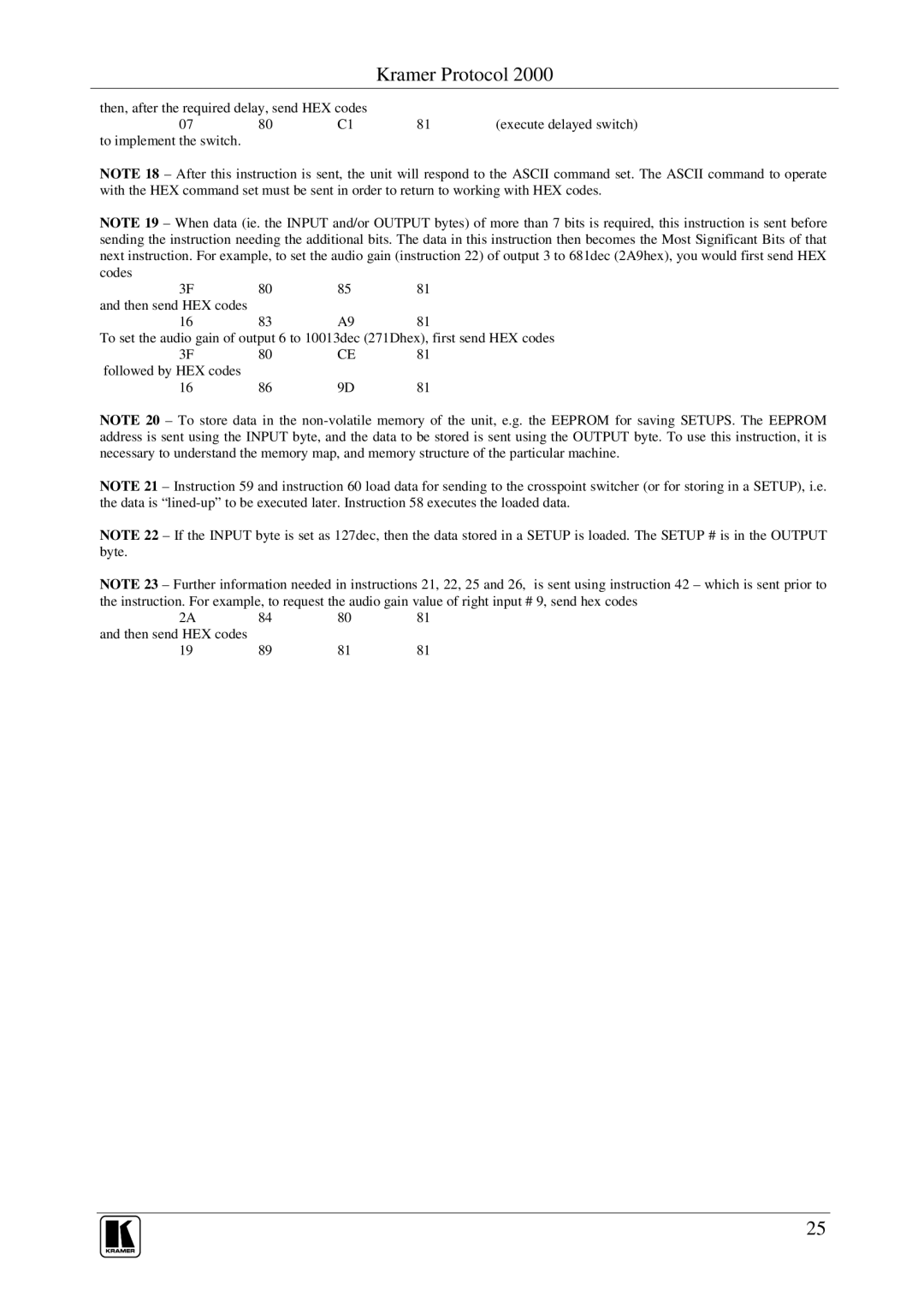
Kramer Protocol 2000
then, after the required delay, send HEX codes
07 80 C1 81 (execute delayed switch) to implement the switch.
NOTE 18 ± After this instruction is sent, the unit will respond to the ASCII command set. The ASCII command to operate with the HEX command set must be sent in order to return to working with HEX codes.
NOTE 19 ± When data (ie. the INPUT and/or OUTPUT bytes) of more than 7 bits is required, this instruction is sent before sending the instruction needing the additional bits. The data in this instruction then becomes the Most Significant Bits of that next instruction. For example, to set the audio gain (instruction 22) of output 3 to 681dec (2A9hex), you would first send HEX codes
3F | 80 | 85 | 81 |
and then send HEX codes |
|
|
|
16 | 83 | A9 | 81 |
To set the audio gain of output 6 to 10013dec (271Dhex), first send HEX codes
3F | 80 | CE | 81 |
followed by HEX codes |
|
|
|
16 | 86 | 9D | 81 |
NOTE 20 ± To store data in the
NOTE 21 ± Instruction 59 and instruction 60 load data for sending to the crosspoint switcher (or for storing in a SETUP), i.e. the data is ª
NOTE 22 ± If the INPUT byte is set as 127dec, then the data stored in a SETUP is loaded. The SETUP # is in the OUTPUT byte.
NOTE 23 ± Further information needed in instructions 21, 22, 25 and 26, is sent using instruction 42 ± which is sent prior to the instruction. For example, to request the audio gain value of right input # 9, send hex codes
2A | 84 | 80 | 81 |
and then send HEX codes |
|
|
|
19 | 89 | 81 | 81 |
25
